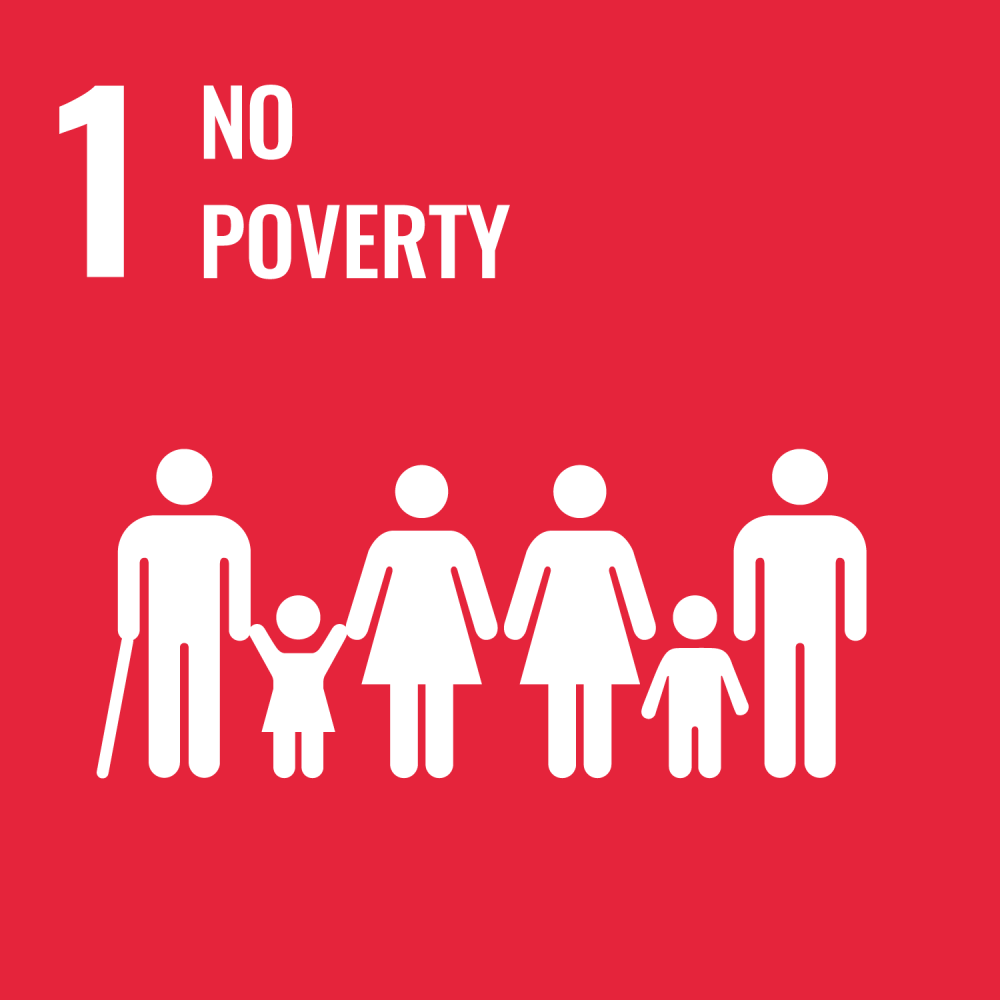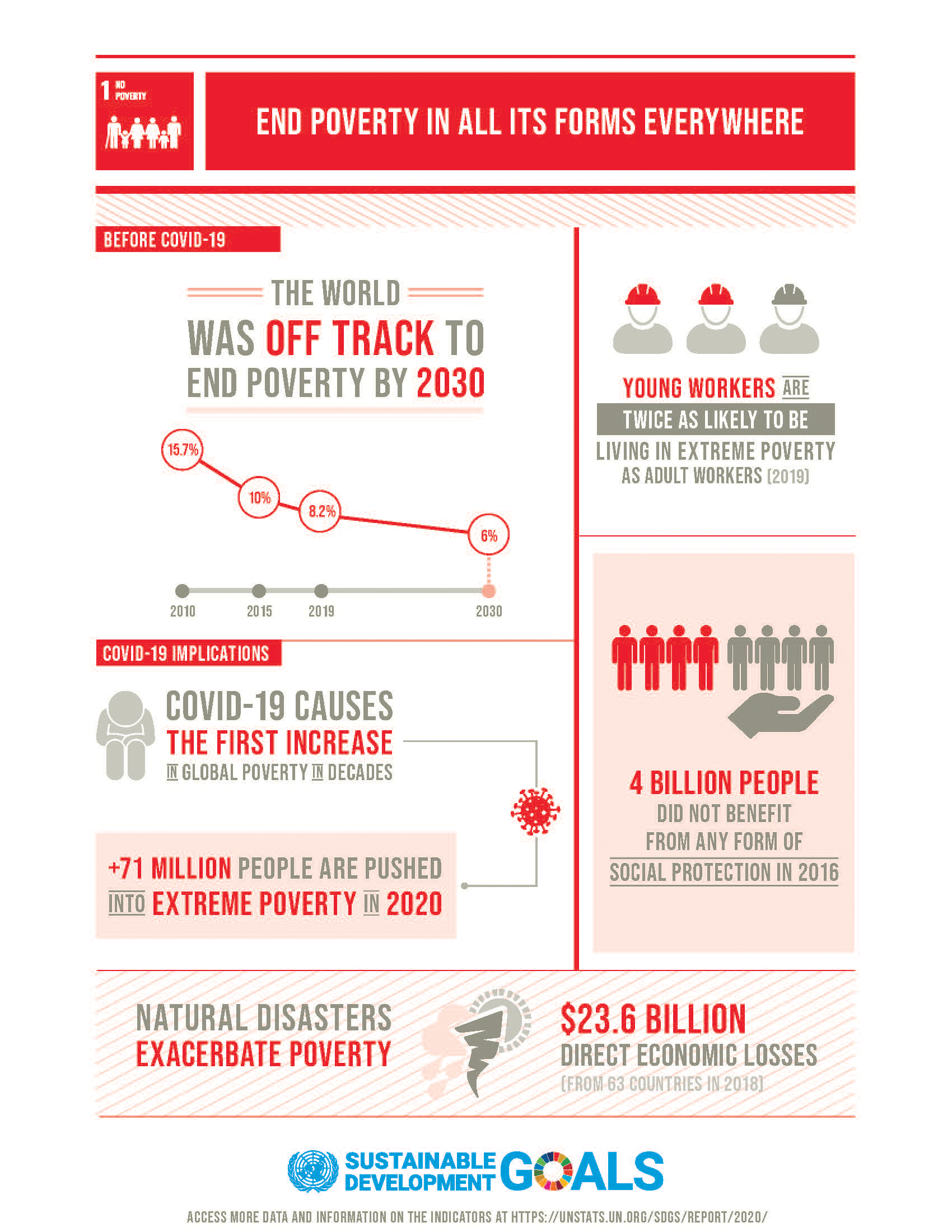To end poverty in all its forms everywhere by 2030

In 2015, more than 700 million people, or 10% of the world population, lived in extreme poverty, struggling to fulfil the most basic needs like health, education, and access to water and sanitation, to name a few. However, the COVID-19 pandemic is reversing the trend of poverty reduction with tens of millions of people in risk of being pushed back into extreme poverty - people living on less than $1.90/day - causing the first increase in global poverty in more than 20 years.
Even before COVID-19, baseline projections suggested that 6% of the global population would still be living in extreme poverty in 2030, missing the target of ending poverty. Developing countries will face a devastating social and economic crisis over the months and years to come, with the pandemic pushing millions of workers into unemployment, underemployment and working poverty.
Having a job also does not guarantee a decent living. In fact, 7.1% of employed workers and their families worldwide lived in extreme poverty in 2019, a positive decline compared to 2010, but the number is expected to rise in light of the long-term consequences of the pandemic.
(Information pulled from NO POVERTY: WHY IT MATTERS)

